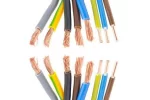Precautions for Installing Power Cables
Installing power cables is a complex and potentially hazardous task that requires careful planning and execution. Whether you are installing power cables in a residential, commercial, or industrial setting, it is essential to follow several precautions to ensure safety and efficiency. In this article, we will discuss the key precautions to keep in mind when installing power cables.
1. Conduct a thorough site assessment: Before starting any cable installation project, it is crucial to assess the site thoroughly. Identify potential hazards, such as underground utilities, overhead power lines, or environmental factors like extreme temperatures or corrosive substances. This assessment will help you plan the cable route and choose the appropriate cables and equipment for the installation.
2. Choose the right cables: Selecting the correct type and size of power cables is vital for their safe and efficient operation. Consider the voltage requirements, current capacity, environmental conditions, and any specific regulatory standards that apply to your project. Consult with experienced electrical engineers or professionals to ensure you choose cables that meet all necessary requirements.
3. Adhere to safety codes and regulations: Compliance with safety codes and regulations is essential to ensure the integrity and reliability of the power cable installation. Familiarize yourself with local, national, and international electrical codes, such as the National Electrical Code (NEC) or International Electrotechnical Commission (IEC) standards. Ensure that you follow all guidelines regarding cable sizing, insulation, grounding, and bonding to prevent electrical hazards and comply with legal requirements.
4. Proper cable handling and storage: Power cables should be handled with care to avoid damage. Avoid dropping or dragging cables on the ground, as this can cause internal insulation damage. Store cables in a clean, dry, and well-ventilated area, away from direct sunlight and extreme temperatures. Additionally, make sure to protect cables from moisture, chemicals, and physical damage during transportation and storage.
5. Follow proper installation techniques: Installing power cables requires following specific techniques to guarantee their safe and efficient operation. Use proper cable pulling methods, such as using a cable reel or cable roller, to avoid excessive tension that may cause cable deformation or insulation damage. Avoid sharp bends, kinks, or twisting during cable installation, as this can lead to increased electrical resistance and heat generation.
6. Ensure proper grounding and bonding: Proper grounding and bonding of power cables are crucial for electrical safety and protection against electrical faults. Follow the recommended grounding practices, including connecting the cable’s metallic shielding or armor to an appropriate ground system. Install bonding conductors and equipotential bonding connections to maintain consistent electrical potential and minimize the risk of electric shock.
7. Perform thorough testing and inspection: After installing power cables, it is essential to conduct comprehensive testing and inspections to ensure their functionality and compliance with standards. Perform insulation resistance tests, continuity checks, and voltage drop measurements to verify the proper installation of the cables. Inspect cable terminations, splices, and connectors for any signs of damage, loose connections, or overheating.
8. Follow proper documentation procedures: Maintain detailed records of the power cable installation process, including cable specifications, routing diagrams, test results, and as-built drawings. This documentation will be valuable for future reference, maintenance, troubleshooting, and compliance purposes.
In conclusion, installing power cables requires careful planning, adherence to regulations, and attention to detail. By conducting a thorough site assessment, selecting the right cables, following safety codes, using proper installation techniques, ensuring grounding and bonding, performing testing and inspections, and maintaining proper documentation, you can ensure a safe and successful power cable installation project. Remember, safety should always be the top priority when working with electricity.
.webp)
